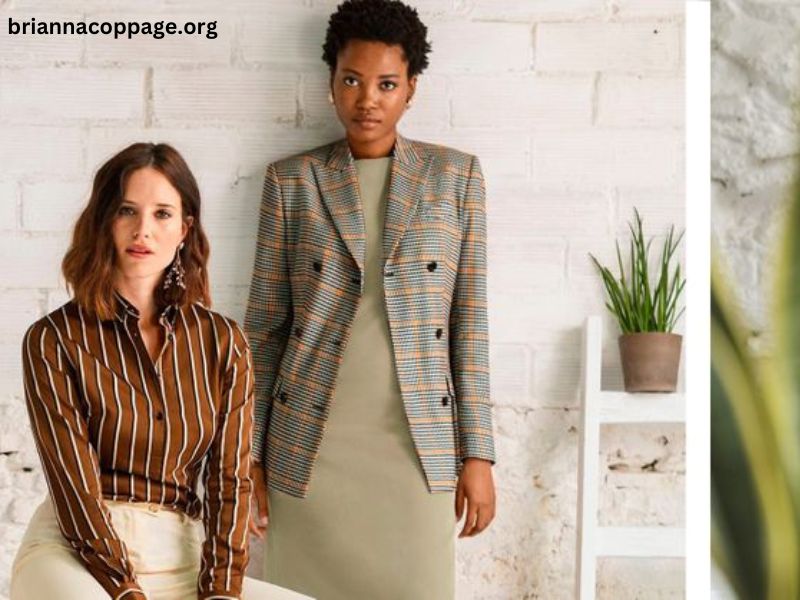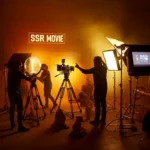Business casual is a dress code that has evolved significantly over the years, particularly for women in the workplace. This style strikes a balance between professionalism and comfort, allowing women to express their individuality while adhering to corporate norms. In this article, we’ll explore what business casual for women encompasses, its evolution, and tips for putting together the perfect outfit.
The Evolution of Business Casual
The term “business casual” first gained traction in the 1990s, emerging as companies sought to modernize their dress codes. Traditional office attire, which typically consisted of suits and ties for men and skirts and blouses for women, began to feel outdated in the face of changing workplace cultures. The rise of technology and more creative industries further fueled the need for a more relaxed yet still professional appearance.
Today, business casual varies greatly depending on the industry, company culture, and geographic location. While some workplaces lean toward more formal interpretations, others embrace a laid-back approach. Understanding the nuances of your specific work environment is crucial when defining what business casual means for you.
Defining Business Casual for Women
Key Elements of Business Casual
- Tops: Blouses, knit tops, and tailored shirts are ideal choices. Avoid overly casual options like t-shirts, tank tops, or anything with loud graphics. Opt for fabrics like cotton, silk, or blends that drape well.
- Bottoms: Trousers, chinos, skirts, and tailored dresses fit well within the business casual spectrum. While denim is sometimes acceptable, it should be dark-washed and free of distressing. Length is also important; skirts and dresses should typically be knee-length or longer.
- Dresses: Shift dresses, wrap dresses, and other tailored styles are excellent options for a polished look. Make sure the dress is not too tight or revealing.
- Footwear: Closed-toe flats, loafers, and low-heeled shoes are preferable. While some offices may allow stylish sneakers, it’s best to stick with professional-looking footwear. Avoid overly casual shoes like flip-flops or athletic sneakers.
- Accessories: Choose minimalistic jewelry and accessories that complement your outfit without overwhelming it. A classic watch, simple earrings, and a structured handbag can elevate your look.
- Outerwear: Blazers, cardigans, and structured jackets can add a touch of professionalism. Layering is also practical for temperature changes throughout the day.
Colors and Patterns
Business casual doesn’t mean you must stick to a monochromatic palette. While neutral colors like black, navy, gray, and beige are staples, feel free to incorporate soft pastels or muted patterns. Stripes, polka dots, or subtle florals can add a refreshing touch, provided they are not too loud or distracting.
Seasonal Considerations
In warmer months, opt for lighter fabrics such as linen or cotton blends. Maxi dresses and capri trousers can keep you comfortable while still looking professional. Conversely, during colder months, layers become essential. Incorporate wool blazers, heavier fabrics, and closed-toe shoes to maintain warmth without sacrificing style.
Business Casual for Different Work Environments
Corporate Settings
In corporate environments, business casual typically leans towards the more conservative side. Think tailored trousers paired with blouses, or a classic shift dress with a blazer. Stick to neutral colors and understated patterns to project professionalism.
Creative Industries
In creative fields, such as advertising or design, business casual can be more relaxed. Here, you might incorporate trendy items, bold colors, or artistic patterns into your wardrobe. However, it’s still essential to avoid anything that appears too informal or sloppy.
Tech Companies
Many tech firms have adopted a more laid-back approach to business casual. Depending on the company’s culture, you might see a mix of casual and business attire. In such environments, stylish jeans paired with a nice blouse and loafers can be perfectly acceptable.
Tips for Achieving the Perfect Business Casual Look
- Know Your Audience: Always consider the culture of your workplace. If in doubt, observe what your colleagues wear and aim to mirror that standard.
- Fit Is Key: Well-fitting clothes can significantly elevate your look. Avoid anything too tight or baggy. Tailoring can make a world of difference, ensuring you present yourself professionally.
- Mix and Match: Building a versatile wardrobe is essential. Invest in classic pieces that can be mixed and matched easily. This allows you to create multiple outfits with fewer items.
- Invest in Basics: A good pair of trousers, a tailored blazer, and a few versatile tops are foundational pieces that can be dressed up or down, making them perfect for a business casual wardrobe.
- Dress for Comfort: While professionalism is important, don’t sacrifice comfort. Choose breathable fabrics and comfortable shoes to help you feel at ease throughout the day.
- Be Mindful of Grooming: A polished appearance goes beyond clothing. Pay attention to hair, makeup, and nails. A clean, neat look complements your outfit and enhances professionalism.
Common Mistakes to Avoid
- Overly Casual Choices: Items like shorts, flip-flops, or sweatpants should be avoided. Even if your workplace is relaxed, maintaining a level of professionalism is essential.
- Too Much Skin: Low-cut tops or short skirts can distract from your professional image. Always opt for a modest silhouette that aligns with your workplace’s expectations.
- Clashing Patterns: While patterns can add flair, mixing too many bold patterns can overwhelm your outfit. Aim for one statement piece and keep the rest understated.
- Ignoring the Weather: Dressing inappropriately for the weather can impact your comfort and professionalism. Be mindful of the climate and dress accordingly.
Conclusion
Business casual for women is all about finding the right balance between professionalism and personal style. Understanding the nuances of your workplace’s culture and adhering to the key elements of this dress code can help you create outfits that are both comfortable and appropriate.
By investing in versatile pieces, focusing on fit, and being mindful of grooming, you can project confidence and professionalism while still expressing your individuality. Whether you’re heading to a corporate meeting or brainstorming in a creative setting, a well-thought-out business casual outfit can set the tone for success.






